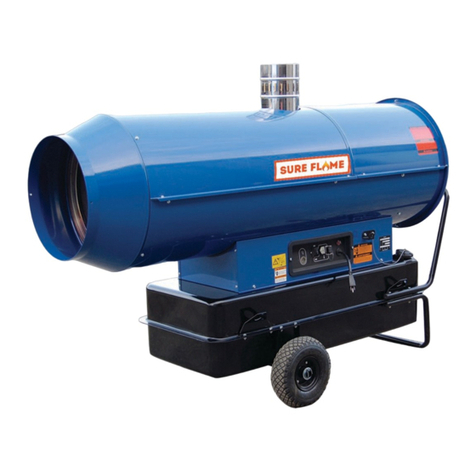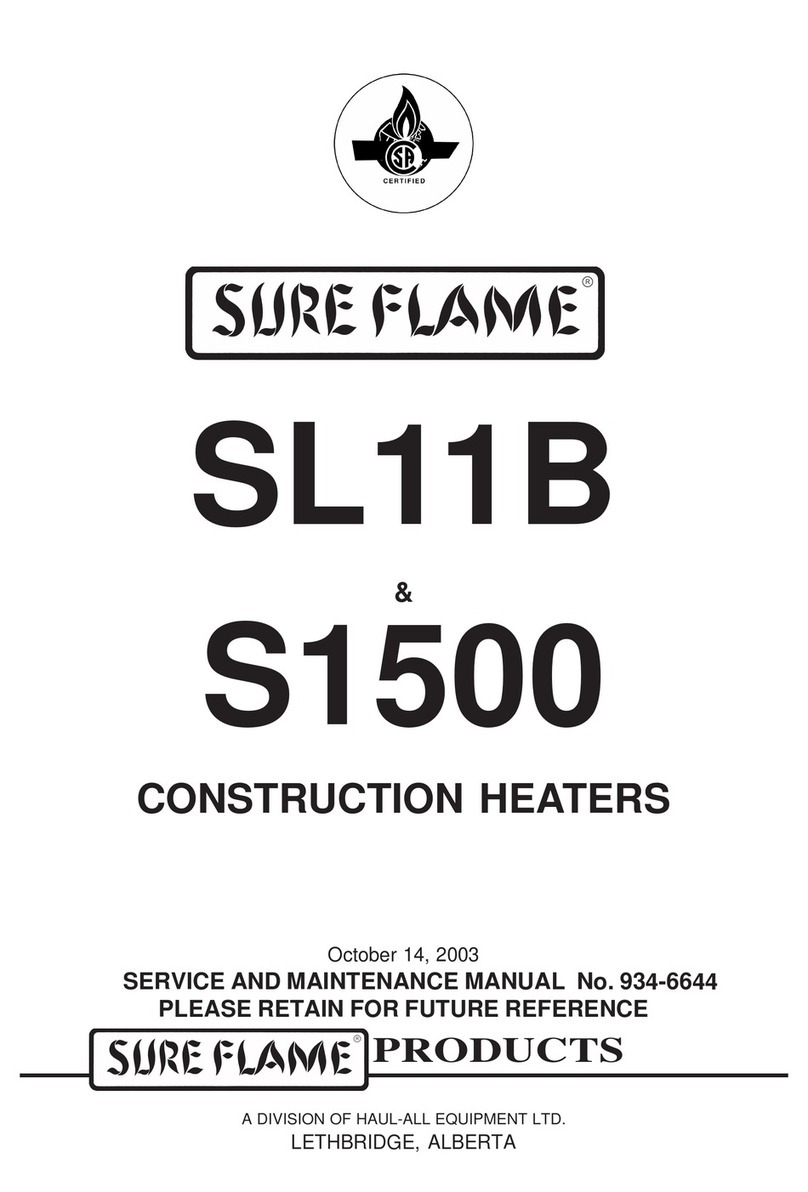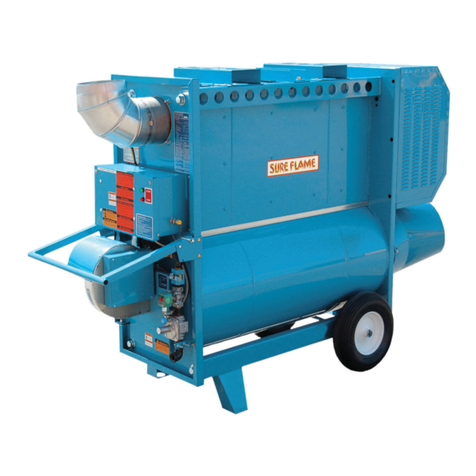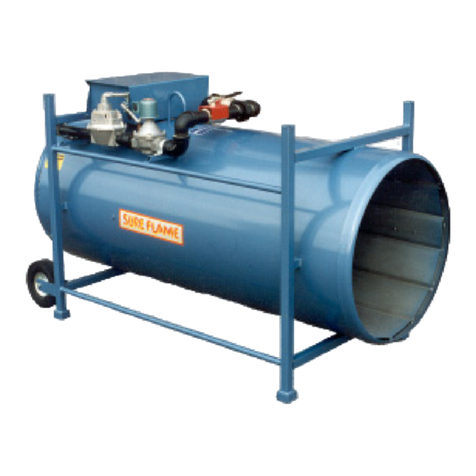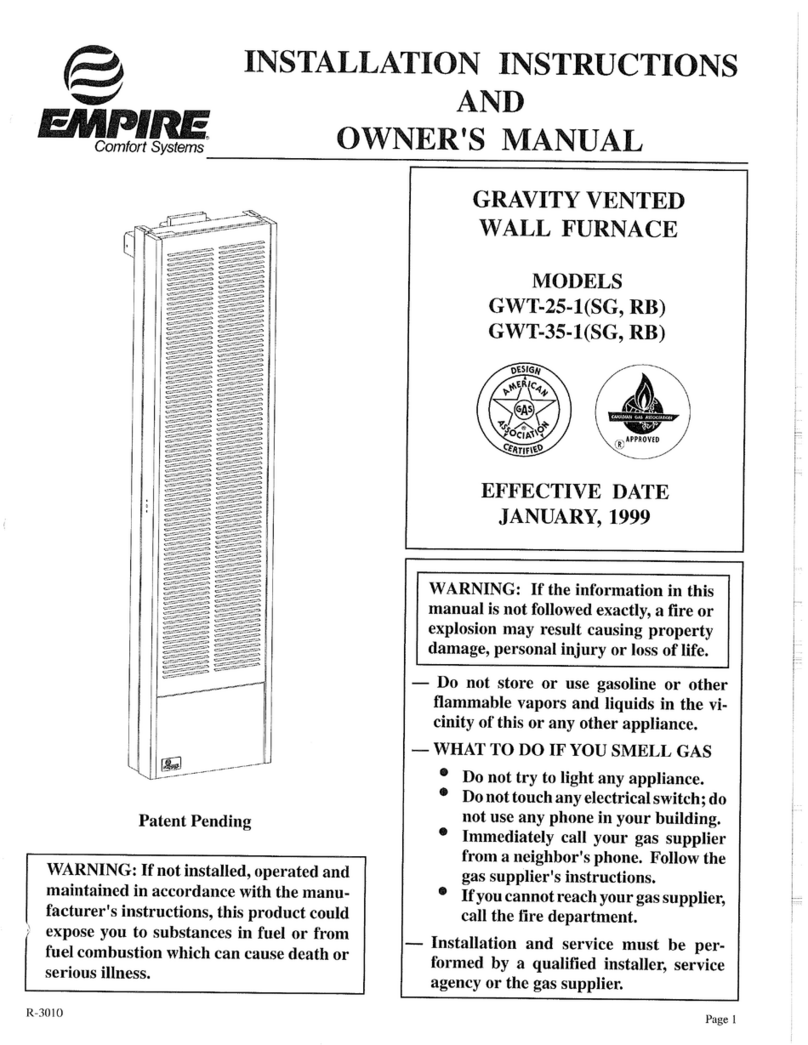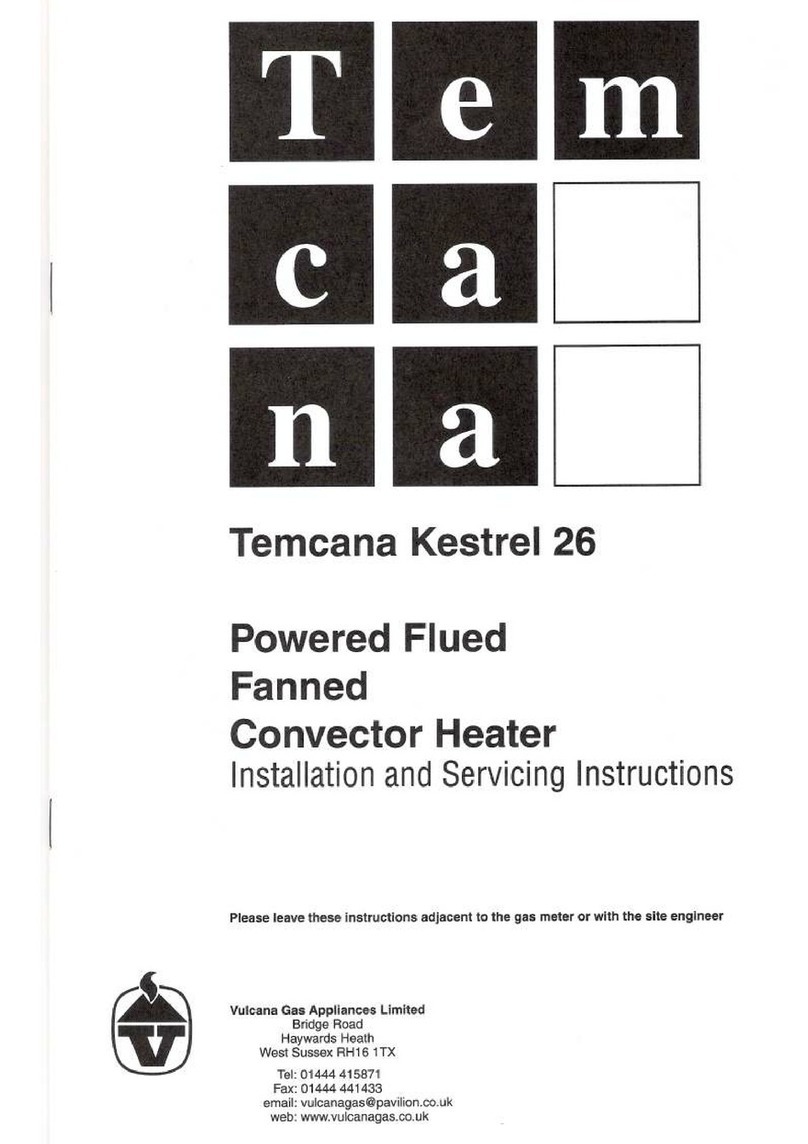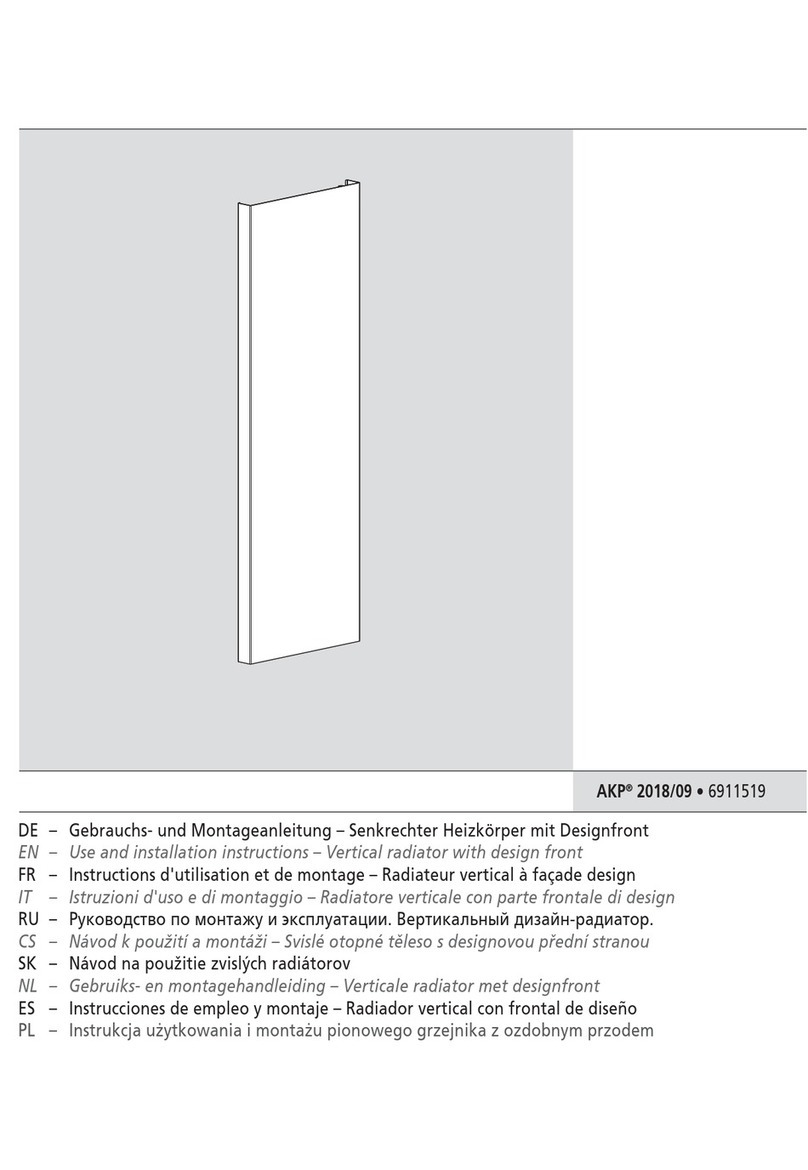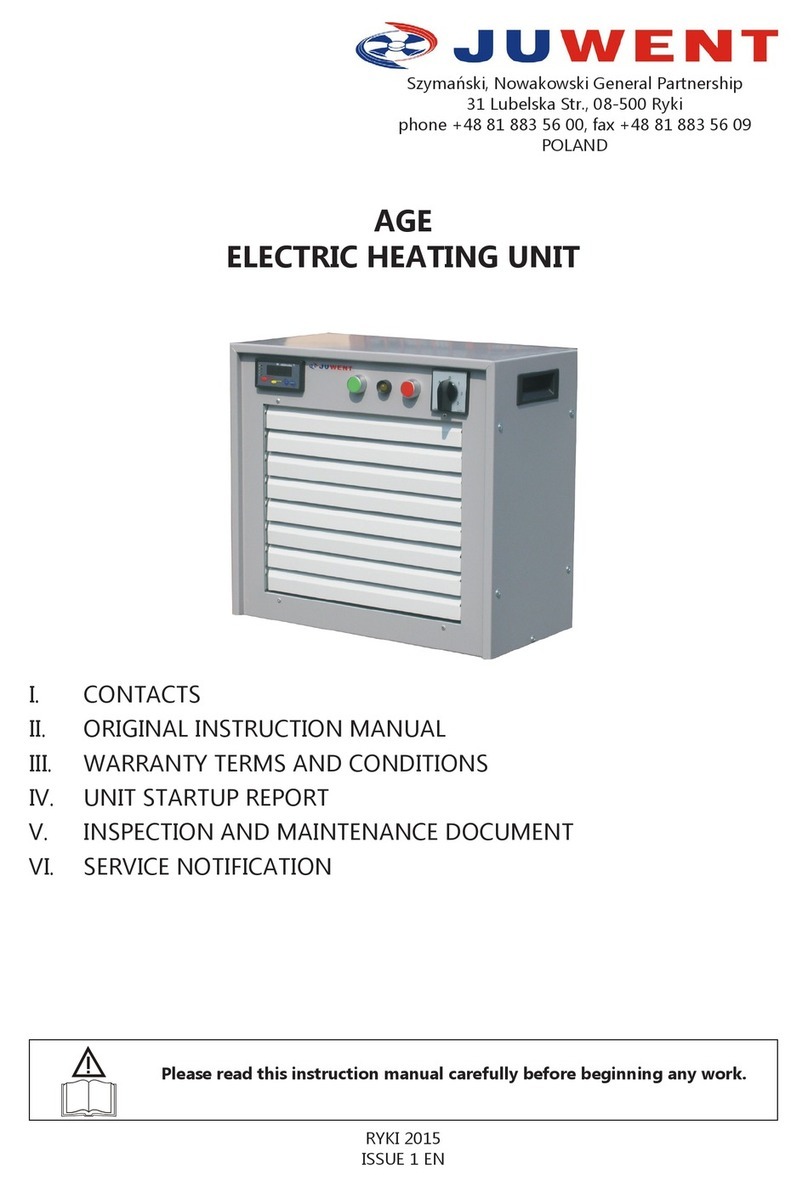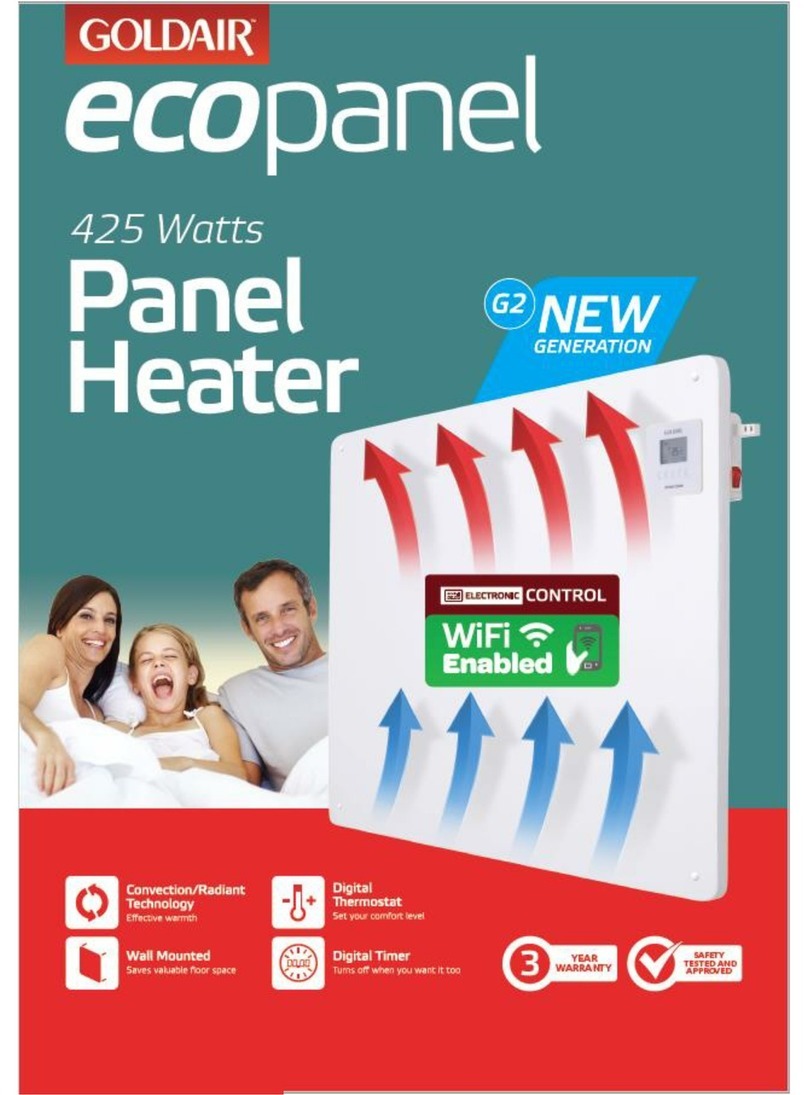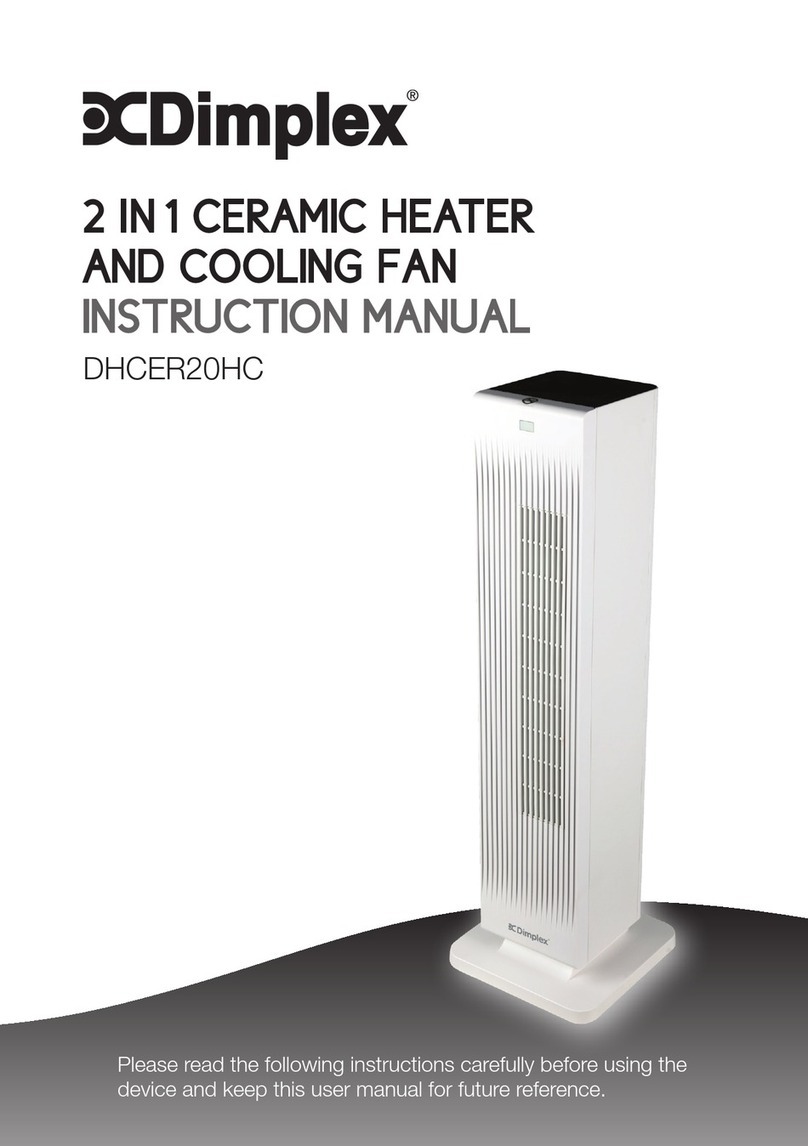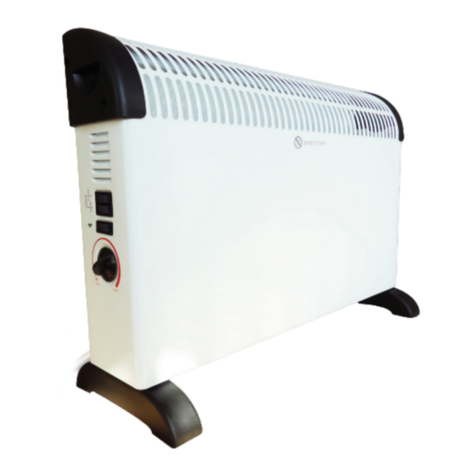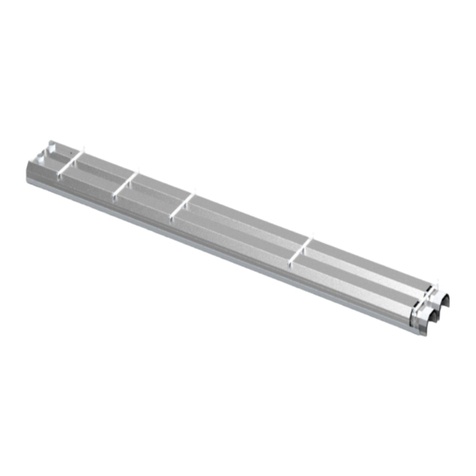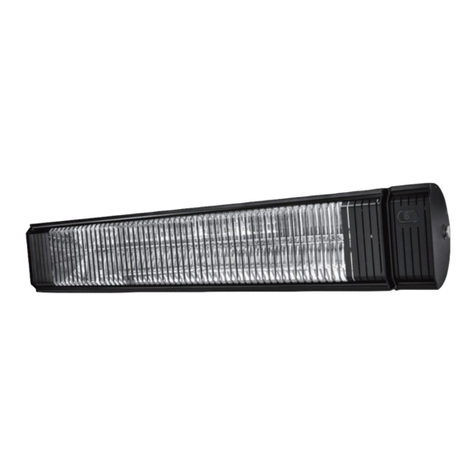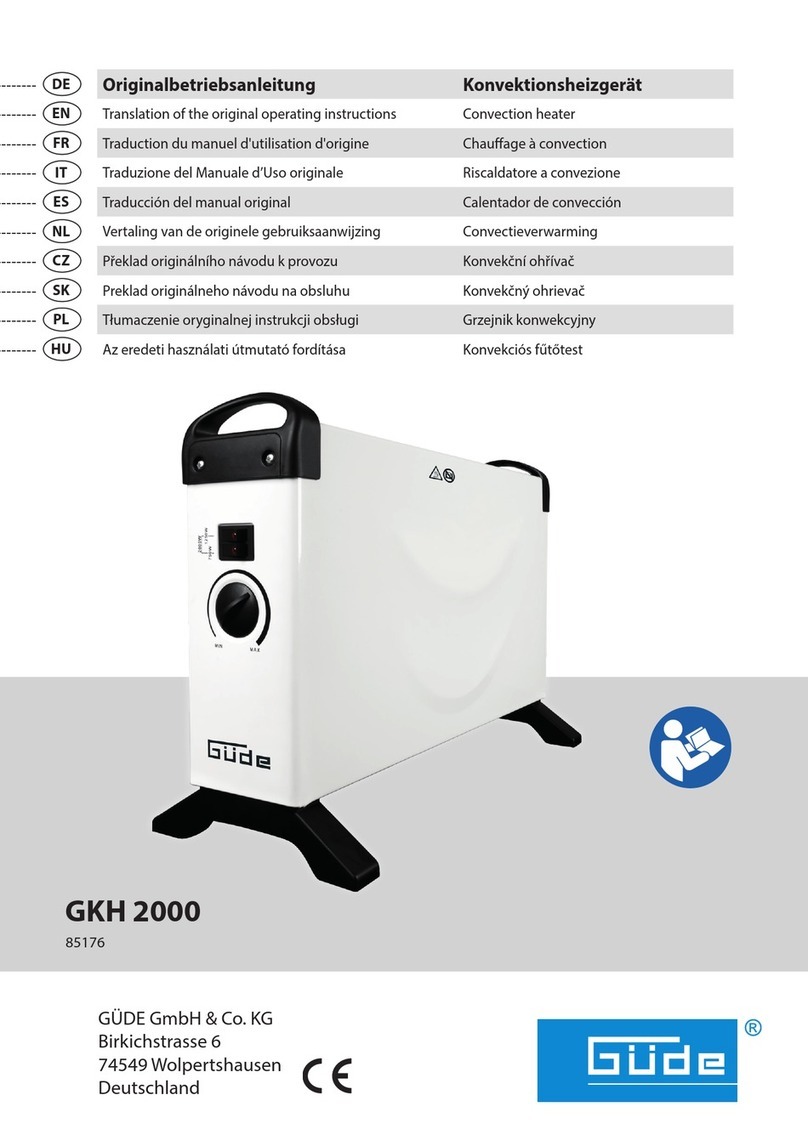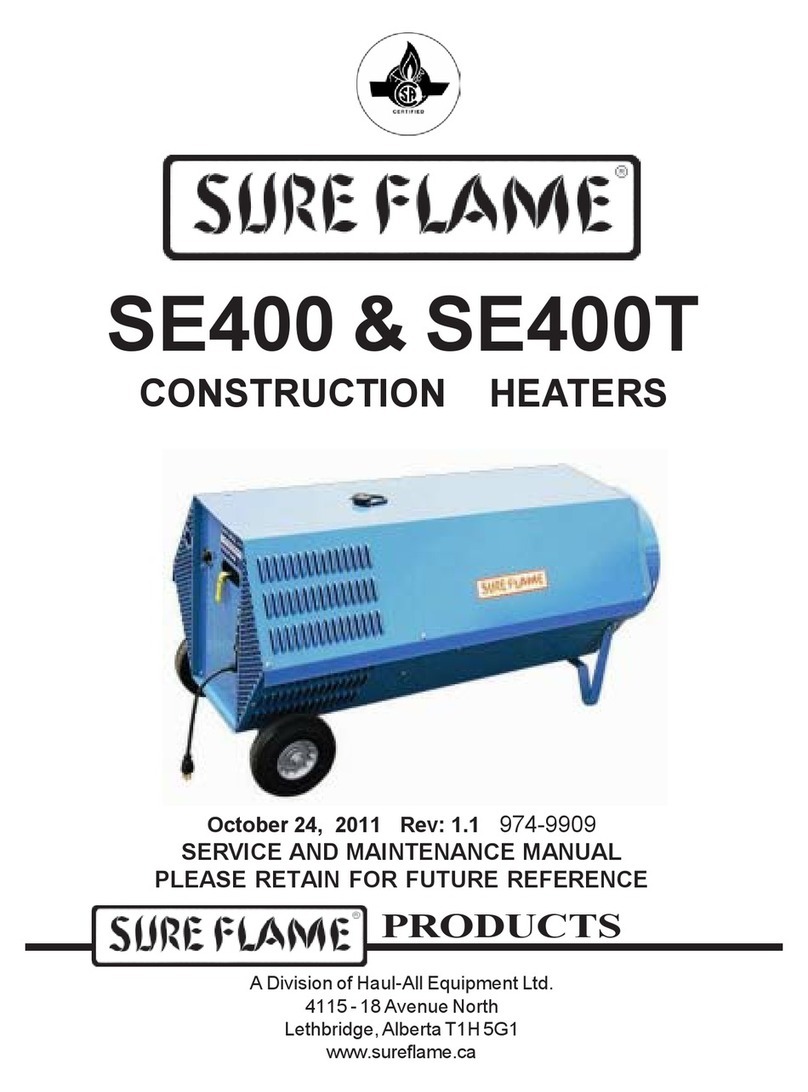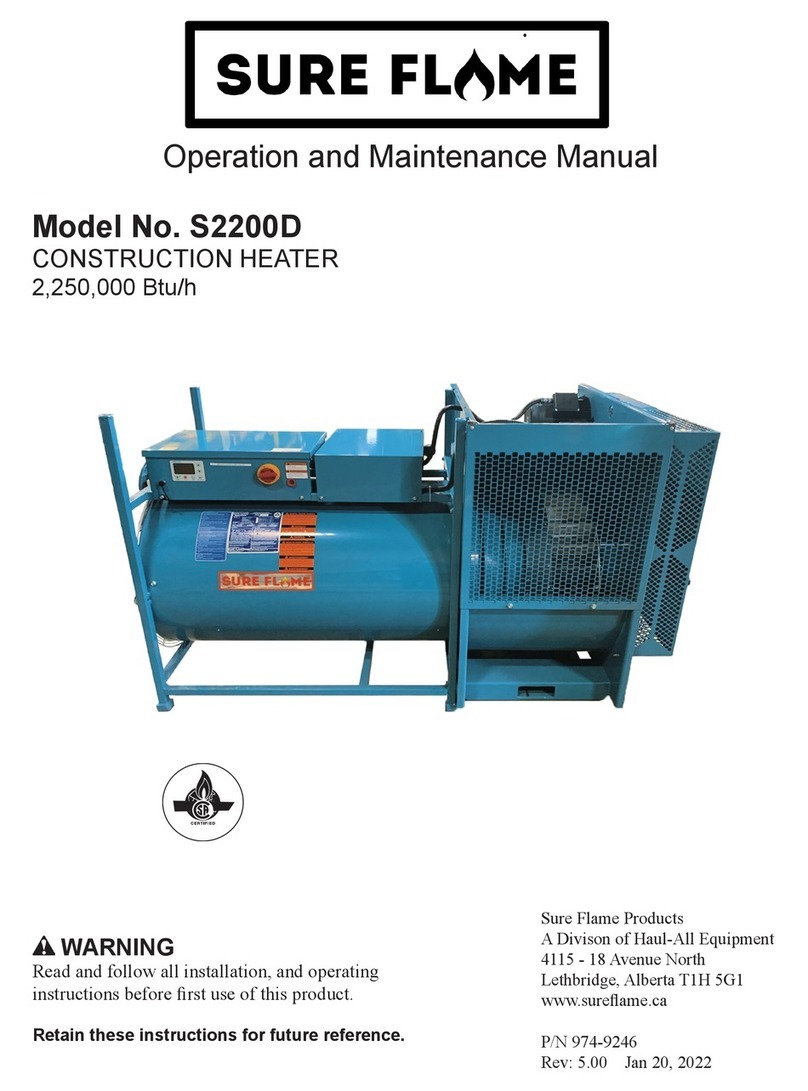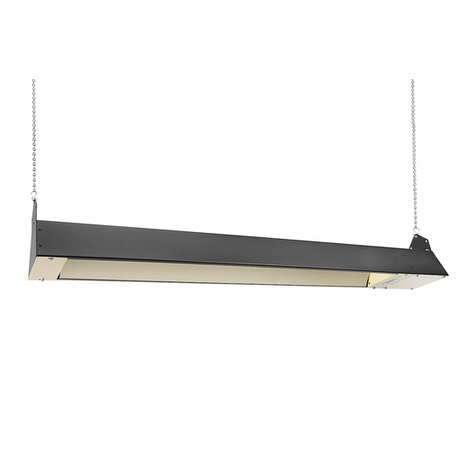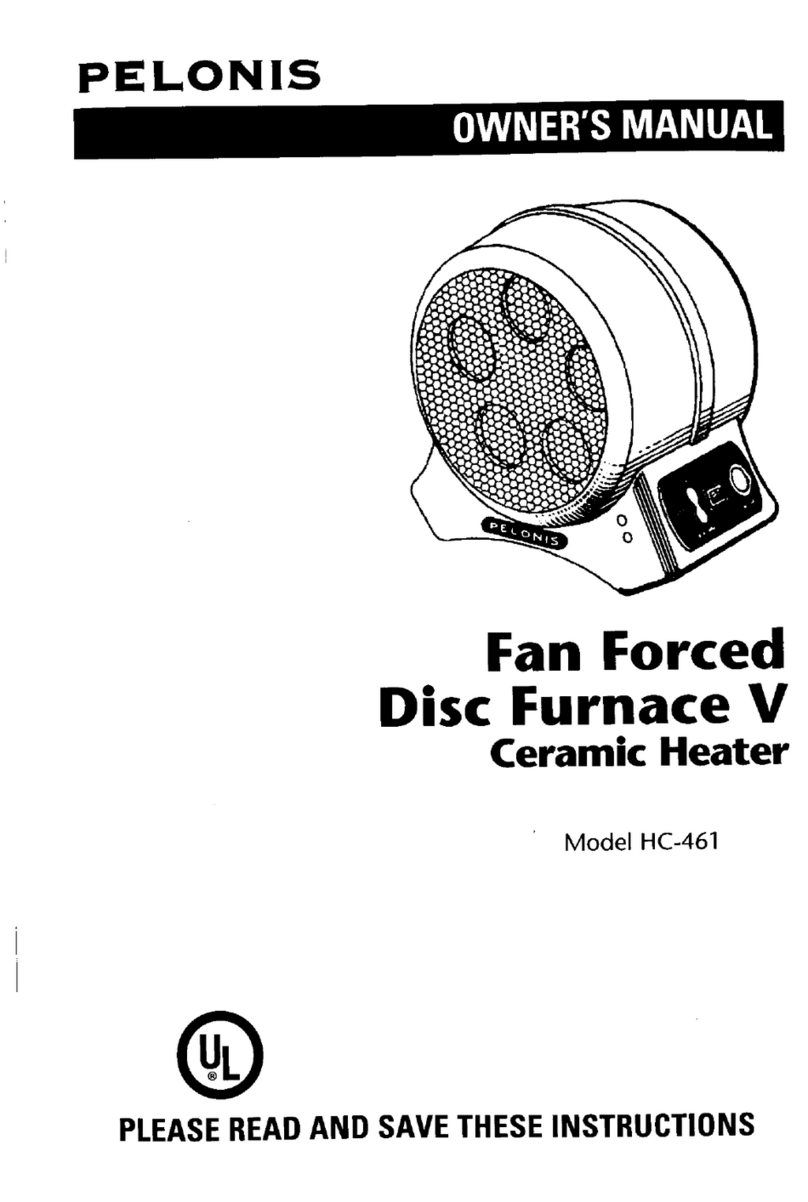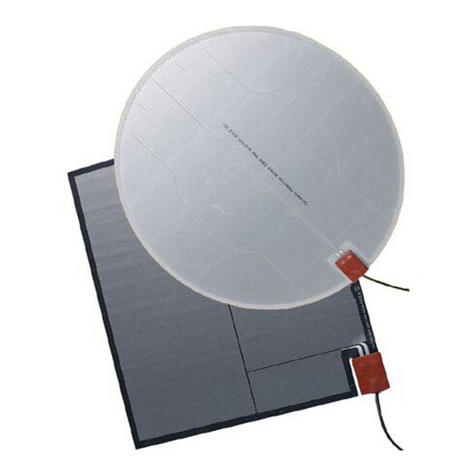
Sure Flame Products
Maintenance and Opertation Manual
P/N 974-9246 Rev 4.22. September 2010
5
The Sure Flame Model S2200 is a direct fired
gas heater intended to be used primarily for the
temporary heating of buildings under construc-
tion, alteration, or repair. Since all the products
of combustion are released into the area being
heated, it is imperative that adequate ventilation
is provided. The flow of supply air must not be
obstructed in any way.
1. Install the heater in a horizontal position at
least 10 feet (3 m) from any LP-gas
container. The front outlet must be at least
20 feet (6 m) from any LP-gas container.
Allow the following clearances from any
combustible material or fuel containers:
Outlet: 25 feet (7.6 m)
Sides: 3 feet (0.9 m)
Intake: 3 feet (0.9m)
Top: 4 feet (1.2 m)
Duct: 1 foot (0.3 m)
Floor: Noncombustible
Also make sure that no flammable vapours
are present in the space where the heater is
being used.
2. When connecting the heater to a natural gas
or propane supply line ensure that the
pressure at the heater inlet is within the
specified range. Excessive pressure (over 5
psig or 34 kPa) will damage the controls and
void the warranty.
3. Visually inspect the supply hose assembly
and ensure that it is protected from traffic,
building materials, and contact with hot
surfaces. If it is evident that there is
excessive abrasion or wear, or the hose is
cut, it must be replaced.
4. After installation, check the hose assembly
for gas leaks by applying a water and soap
solution to each connection.
5. Connect the heater to an adequate electric
power supply as specified on the Heater
Specification label and the Electric Motor
plate.
6. For protection against shock hazard the
supply cord should be plugged directly into
a properly grounded receptacle in compli-
ance with the
Canadian Electrical Code,
CSA C22.1, Part 1.
The appliance area should be kept clear and free
from combustible materials, gasoline, and other
flammable vapours and liquids.
Ensure that the flow of supply air is not
obstructed.
The installation and operation of the heater shall
comply with the code requirements specified by
the authorities having jurisdiction.
General criteria for the installation and use of
construction heaters may be found in the
applicable sections of the
Natural Gas and Propane Installation
Code,CSA B149.1
The installation and maintenance of the heater
must be accomplished by a qualified service
person.
This heater is approved for use without
ductwork, or with up to 40 feet of 24” square
ductwork. Only ductwork supplied by the
manufacturer should be used with this heater.
When using the heater without ductwork,
securely fasten the outlet screen in the down
position.
Heater Installation





















